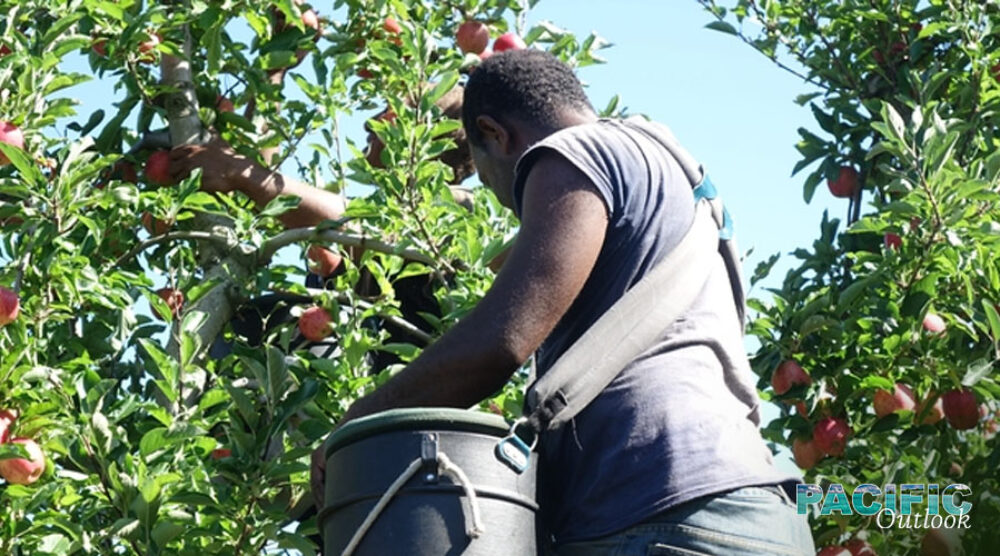COVID-19 has demonstrated the central part that connection plays in our lives. We have experienced what can be achieved when people work together and what is lost when they can’t, or won’t. Some connections have been severed between Australia and its Pacific neighbours—our closed borders are showing just how much we need each other. We have maintained humanitarian connection, and the internet has been a boon. But other links have closed down. This is most evident in the cessation of the physical movement of people. Australians can’t travel to Pacific countries to work or play, and Pacific island people can’t come here.
Everyone is rightly concerned about the travel bans. Pacific tourism has taken a massive hit, leading to huge losses of income and revenue in Fiji and Vanuatu especially. Trade has also suffered. And in Australia, the start of the growing season has been marked by worry that our closed borders will stop workers from coming to tend what may be a bumper crop. Our pressing need for foreign workers, notably from the Pacific, is moving from the periphery of the financial pages. Stories are steadily appearing on the need for labour and the situation of those workers who can’t get home, often emphasising the strength of relationships between the workers and host communities. It’s even possible that right now we need Pacific islanders more than they need us as remittances to the Pacific have been surprisingly resilient. But in the long run Pacific labour mobility to Australia clearly benefits us all.
As we know further to last week’s meeting of National Cabinet, the door for Pacific labour mobility has been re-opened. The Northern Territory’s trial with Vanuatu will be just the beginning. But as we reconnect, do we want to simply return to where we were, or can we aim higher? Could we move from managed programs to a regional labour market?
Australia has steadily built up Pacific labour mobility since 2008. A trial led to the Seasonal Worker Program in 2012, focused on lower skilled, short term agricultural employment. The Pacific Labour Scheme was added in 2017, welcoming higher skilled workers across numerous industries, with visas for up to three years. Today, more than 12 000 workers participate in the SWP each year (and 51,000 since it began), and around 1 000 in the PLS. Taken together these initiatives show how Australia’s government and businesses have become increasingly confident in, and dependent on, Pacific island workers. Competition for places in the schemes is also intense, and remittances comprise an increasing part of the national income in some countries—for Tonga, even surpassing aid and trade combined.
Meanwhile the Australia-Pacific Technical College started life in 2007, with the aim of equipping Pacific islanders for higher skilled work at home and abroad. 15 000 people from 14 Pacific countries have passed through APTC (now the Australia Pacific Training Coalition).
The Seasonal Workers Program and especially the Pacific Labour Scheme are welcome and valued, and various problems are being progressively ironed out. Meanwhile the Australia Pacific Training Coalition (APTC) is valued for its vocational training offerings, but it has fallen short of its ambition to place more skilled Pacific workers in jobs away from home. In an excellent seminar recently, Satish Chand and Michael Clemens showed how many problems could be resolved by better connecting Australia’s foreign and aid policies to domestic policy.
Australians and Pacific islanders all support enhanced labour mobility, as a decade’s steady investment, improvement and expansion shows. Even so, most of the action around Pacific labour mobility remains transactional rather than systemic. The APTC represents Australia’s biggest investment in systemic change, and even with its flaws it is highly prized. But even if it fixes its existing initiatives Australia cannot solve the region’s labour challenges on its own. Nor can New Zealand, the USA or even China. Conversely, no one country offers Pacific islanders all that they want in terms of education, training and employment opportunities. Are everyone’s interests being best served through the current collection of donor-to-region arrangements?
Perhaps our current pause for breath offers a chance for a new, collective conversation, in which the Pacific states, New Zealand, Australia and interested countries from Asia and the Americas can come together to discuss our shared labour needs. Could we collectively articulate our needs for labour, for a job, for training and investment? What does each party have to offer, by way of skills, workers, facilities and capital? How can a mature Pacific labour market address not only the need for Pacific labour mobility but also the need for employment and livelihoods security at home?
It has long been accepted wisdom that few Pacific island states can be economically sustainable on their own. We are learning in Australia that the same holds true for us. A shared, multipolar Pacific labour market could be one way that we may move closer to that goal together. As a bonus, an integrated regional labour market would be a formidable expression of soft power.
What sort of cloth could we make together, with our complementary strengths and needs?
James Cox, Executive Director, Peacifica.
The Pacific Outlook series is an initiative of the Pacific Hub.








